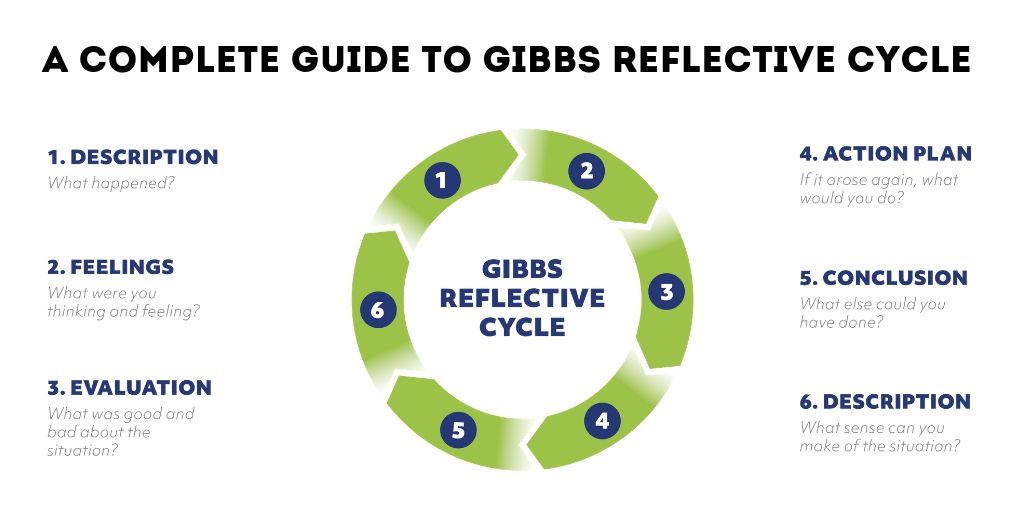
Gibbs Reflective Cycle Nursing Australia A Complete Guide
In this video, we explained Gibbs' Reflective Cycle - a structured framework for reflective practice that is widely used in healthcare, education, and social.
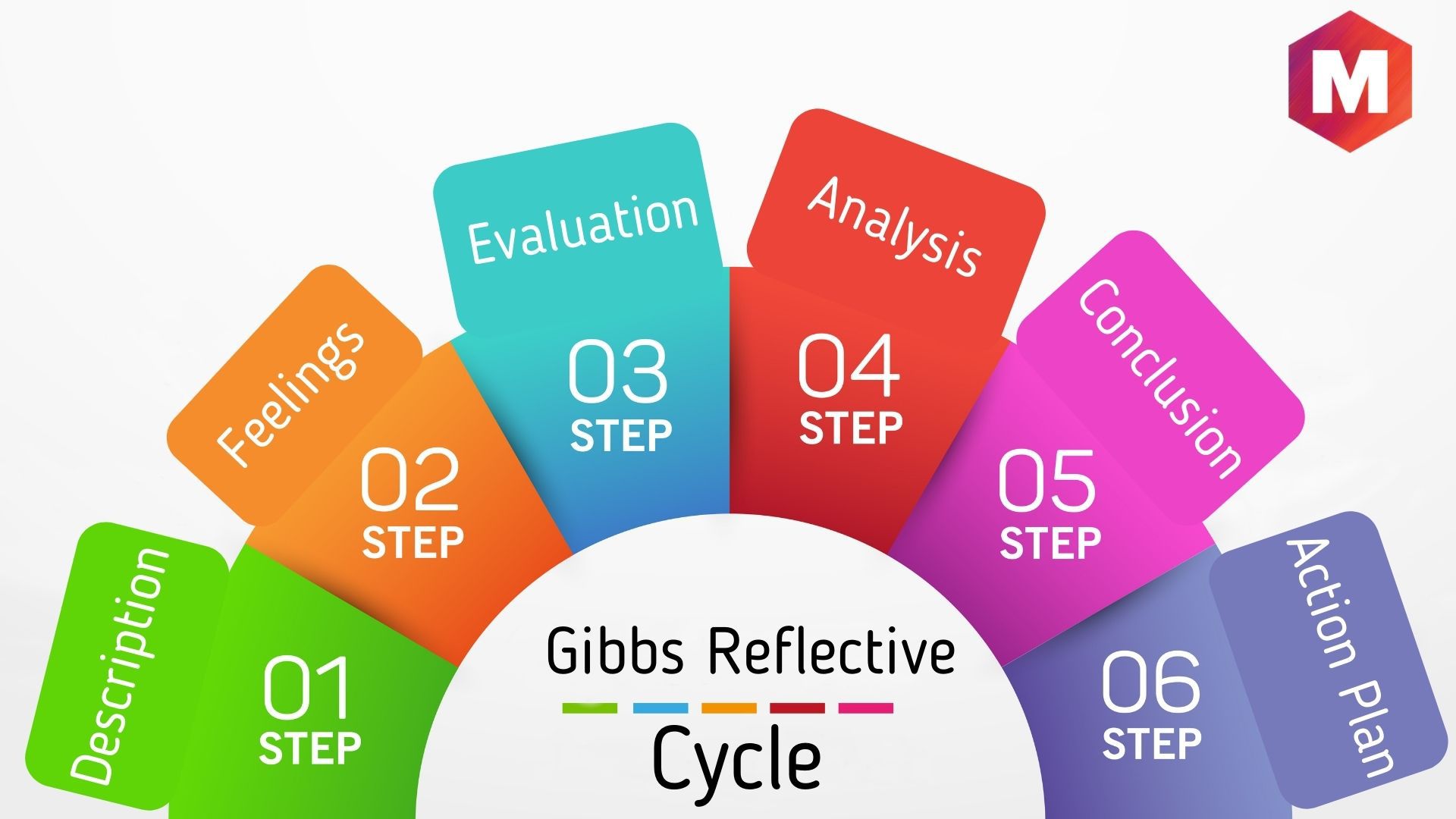
Gibbs Reflective Cycle and Model from 1988 Marketing91
Gibbs' reflective cycle This model is a good way to work through an experience. This can be either a stand-alone experience or a situation you go through frequently, for example meetings with a team you have to collaborate with.
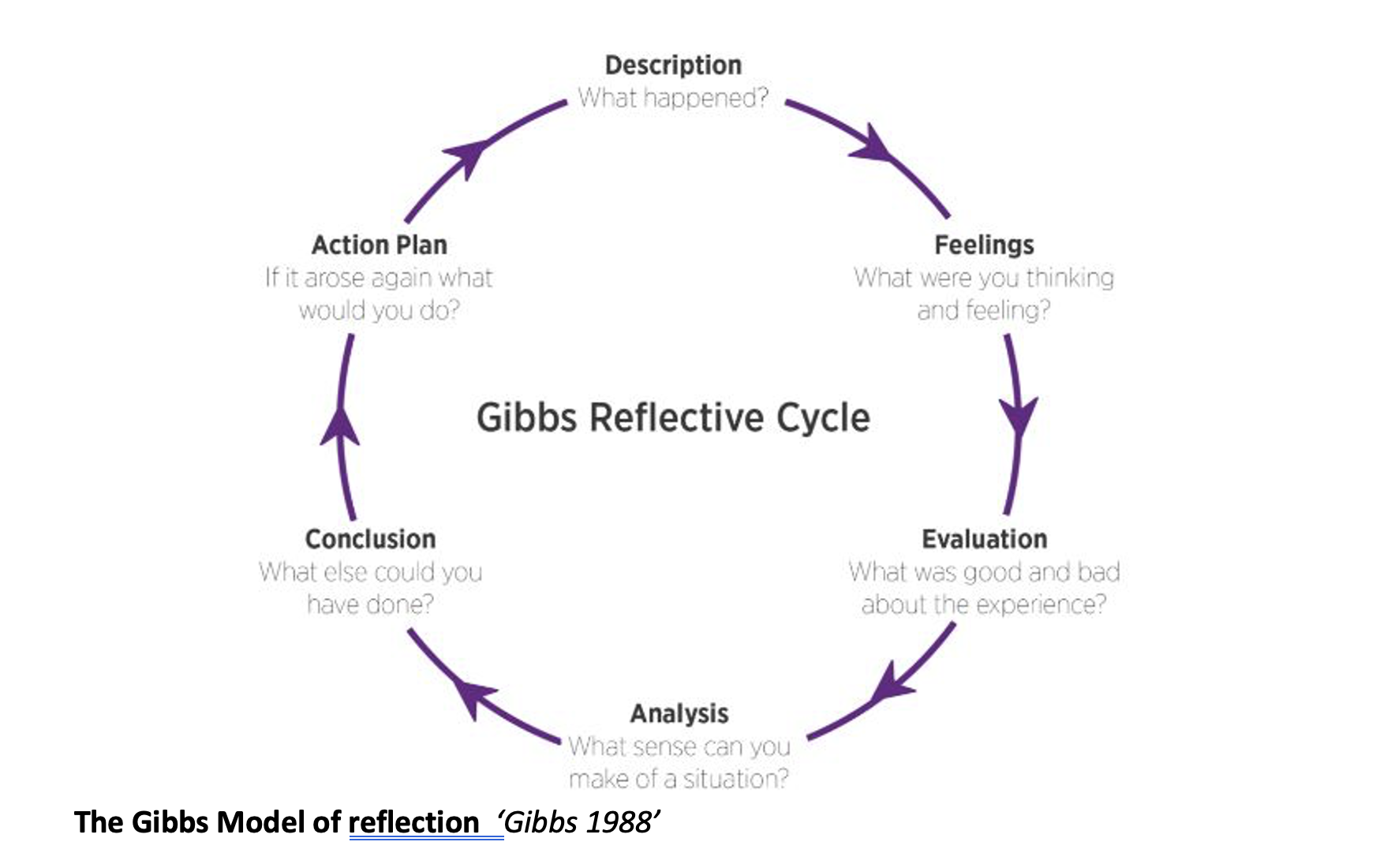
How to apply Gibbs Model of Reflection Association of MBAs
Gibbs' reflective cycle skills@cumbria June 2020 Gibbs' reflective cycle Gibbs (1988, p.49) created his "structured debriefing" to support experiential learning. It was designed as a continuous cycle of improvement for a repeated experience but can also be used to reflect on a standalone experience.
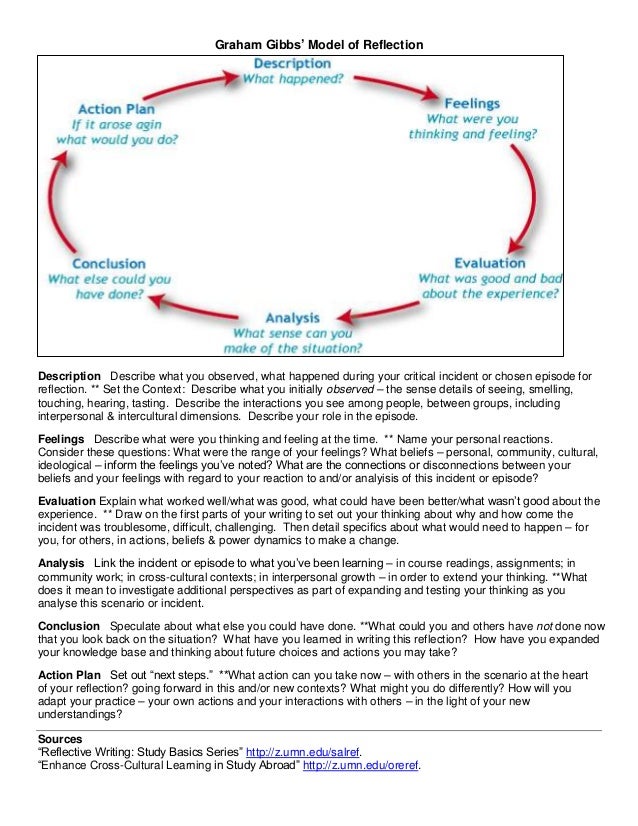
Graham Gibbs Reflection Cycle, Annotated
Gibbs Reflective Cycle: this article explains the Gibbs Reflective Cycle by Graham Gibbs in a practical way. Next to what it is, this arfticle also highlights the steps of the Reflective Cycle, the realtionship with experiences and a downloadable and editable Gibbs Reflective Cycle example template to get started yourself. After reading it, you understand the core of this management and self.

Reflective writing Federation University Study Skills
Gibbs, G. (1988) Learning by doing. A guide to teaching and learning methods. Oxford Polytechnic: Oxford Description - what happened? A patient that I had been looking after for many years with cystic fibrosis finally died on my ward. Feelings - what were you thinking and feeling?

SOLUTION Gibbs' Reflective Cycle the 6 stages Studypool
Stage 1: Description Stage 2: Feelings Stage 3: Evaluation Stage 4: Analysis Stage 5: Conclusions Stage 6: Action Plan Advantages And Disadvantages Of Gibbs Reflective Cycle Advantages Disadvantages Alternatives To Gibbs Reflective Cycle An Example Of Gibbs Reflective Cycle Description - Stage One Feelings - Stage Two Evaluation - Stage Three

Gibbs' Reflective Learning Cycle HELEN MARTIN BLOG
To see if Gibbs reflective cycle can help you reflect on aspects of your practice, recall a nursing situation that didn't turn out as you expected or go to plan. Look at the Gibbs Model flow chart above - Stage 1 - Description (Pure Facts) The first step is to describe what you know. Ask yourself the following questions:

Reflection Is it a skill? Leap Like A Salmon
An example of a study that examined the impact of Gibbs' Reflective Cycle on medical students was documented in Dhaliwal et al. (2018) where they piloted a reflective assignment in which medical students were introduced to Gibbs' Reflective Cycle during a half-day workshop and subsequently submitted reflective narratives based on a doctor-to-patient interaction that they had previously.
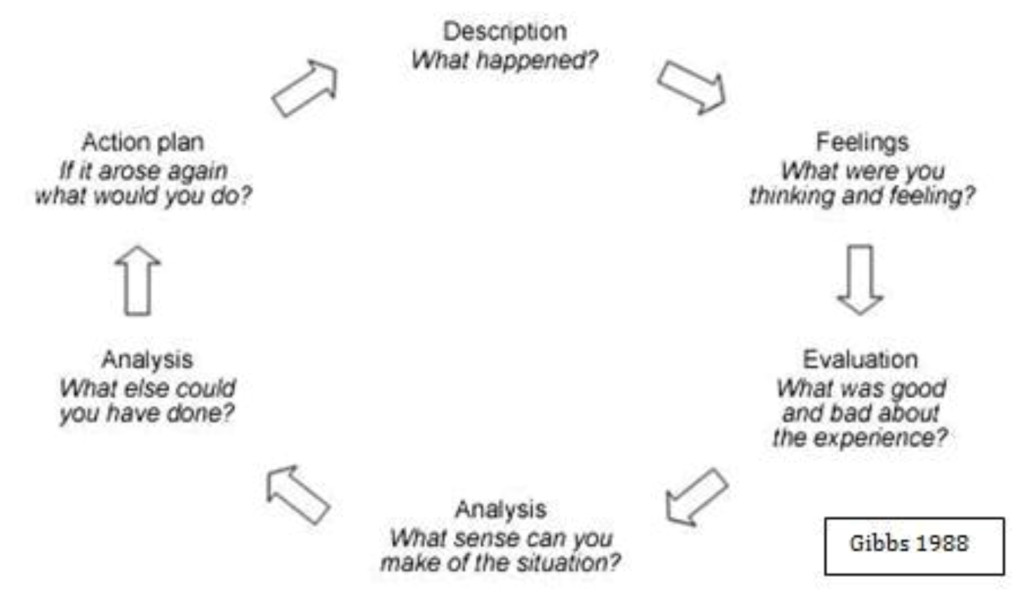
Gibbs Reflective Model Template williamsonga.us
Let's look at these five stages using Manisha's aforementioned situation as an example of Gibbs' reflective cycle. Stage 1—Description The first stage in Gibbs' reflective model is all about understanding what happened in detail without drawing any conclusions.
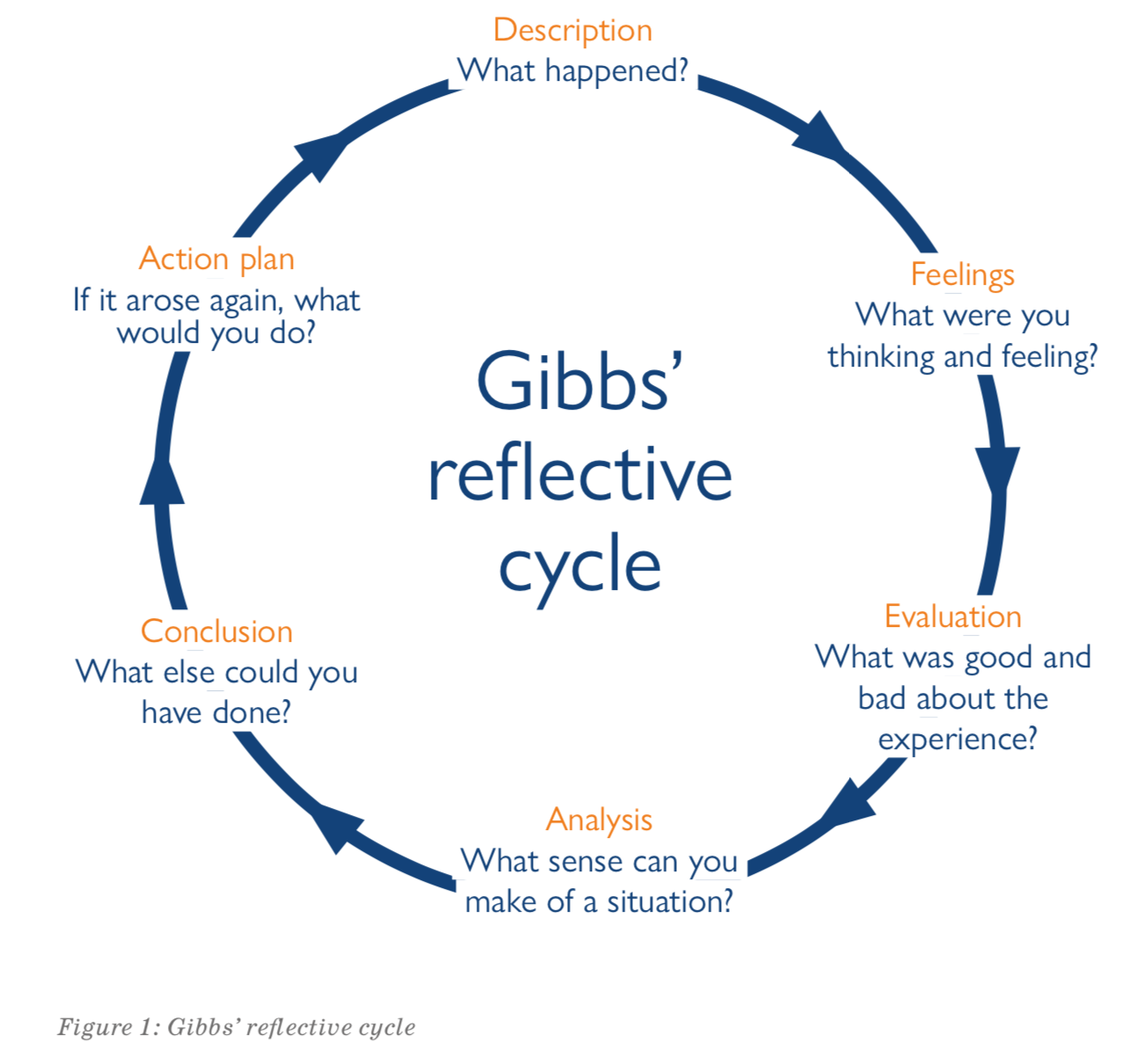
🏷️ Nursing reflection examples using gibbs. Gibbs Reflective Cycle Essay Example. 20221028
Using Gibbs: Example of reflective writing in a healthcare assignment Description In a placement during my second year when I was working on a surgical ward, I was working under the supervision of my mentor, caring for a seventy-two year old gentleman, Mr Khan (pseudonym), who had undergone abdominal surgery.

Gibbs Model Of Reflection / What is gibbs model of reflection. Reflective writing / For this
Here's A Complete Guide to Gibbs Reflective Cycle with Examples! If you are a student pursuing nursing courses then you may have a well understanding of nursing reflection examples such as Johns, Atkins and Murphy, Gibbs, and other models. Composing assignments on these models can be challenging for many students.
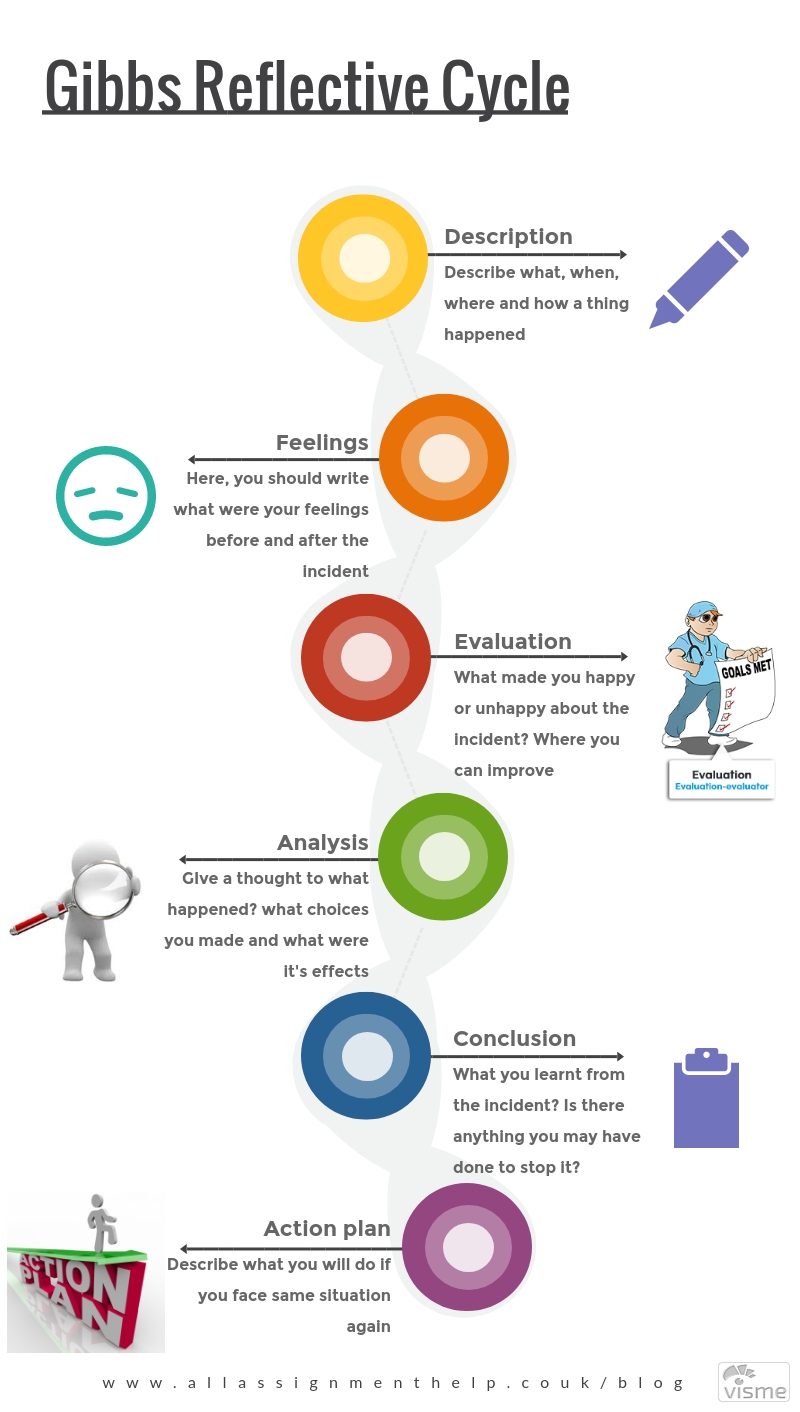
Your Essential Guide to Gibbs Reflective Cycle
Example of Gibbs' reflective cycle FAQs References Hence, the efficacious use of Gibbs' reflective cycle helps individuals to learn from past experiences that went well as well as past experiences that did not. The 6 stages of Gibbs' cycle include description, feelings, evaluation, analysis, conclusion, and action plan (Smith & Roberts, 2015).

Gibbs' Reflective Cycle Source Gibbs (1988) Download Scientific Diagram
The Gibbs reflective cycle consists of six distinct stages: Description, Feelings, Evaluation, Analysis, Conclusion, and Action Plan. Each stage prompts the individual to examine their experiences through questions designed to incite deep and critical reflection. For instance, in the 'Description' stage, one might ask: "What happened?".

Personal Leadership Course Framework & Model Personal Leadership Coach UK
1. Description The Gibbs Reflective Cycle starts by objectively describing the situation or experience that is to be evaluated and reflected upon. In this stage, you will provide details regarding the context and individuals involved, as well as any relevant background information. 2. Feelings

Gibbs reflective cycle (Gibbs, 1988) Download Scientific Diagram
What Is Gibbs' Reflective Cycle? Professor Graham Gibbs published his Reflective Cycle in his 1988 book " Learning by Doing ." It's particularly useful for helping people learn from situations that they experience regularly, especially when these don't go well. Gibbs' cycle is shown below. Figure 1 - Gibbs' Reflective Cycle
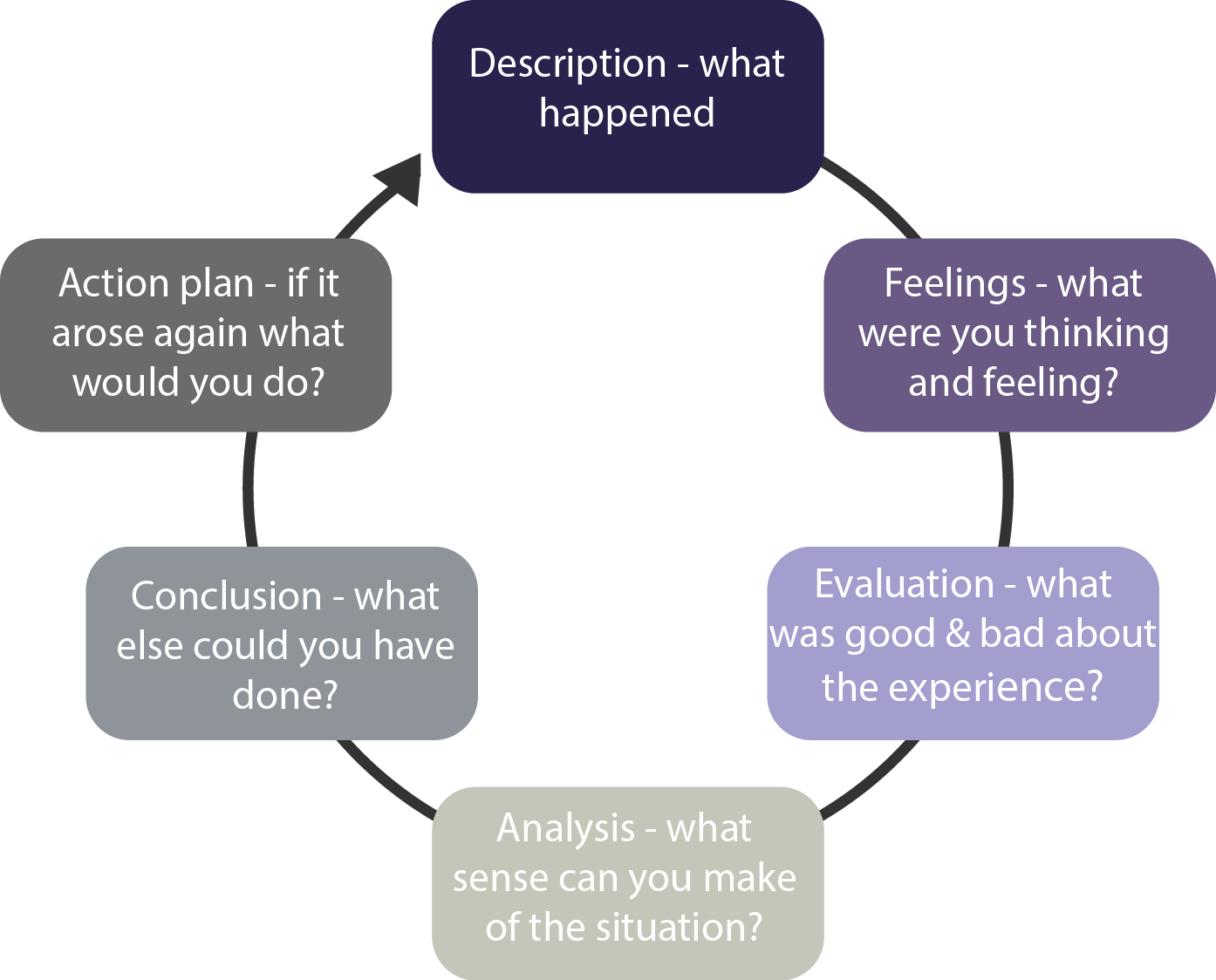
The value of reflective practice for partnership brokers The Partnership Brokers Association
1. Description In this element of the cycle, you recount what you are reflecting upon, giving a descriptive account with contextual information as appropriate. If reflecting to others (as a piece of academic or report writing, for example) make sure that they have all the relevant information.